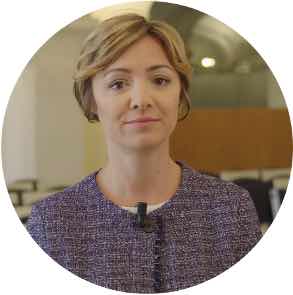Studying at the University of Verona
Here you can find information on the organisational aspects of the Programme, lecture timetables, learning activities and useful contact details for your time at the University, from enrolment to graduation.
Academic calendar
The academic calendar shows the deadlines and scheduled events that are relevant to students, teaching and technical-administrative staff of the University. Public holidays and University closures are also indicated. The academic year normally begins on 1 October each year and ends on 30 September of the following year.
Course calendar
The Academic Calendar sets out the degree programme lecture and exam timetables, as well as the relevant university closure dates..
| Period | From | To |
|---|---|---|
| Primo Semestre Magistrali | Oct 2, 2017 | Dec 22, 2017 |
| Secondo Semestre Magistrali | Feb 26, 2018 | May 25, 2018 |
| Session | From | To |
|---|---|---|
| Esami sessione invernale Magistrali | Jan 8, 2018 | Feb 23, 2018 |
| Esami sessione estiva Magistrali | May 28, 2018 | Jul 6, 2018 |
| Esami sessione autunnale 2018 | Aug 27, 2018 | Sep 14, 2018 |
| Session | From | To |
|---|---|---|
| Lauree sessione autunnale (validità a.a. 2016/17) | Nov 27, 2017 | Nov 28, 2017 |
| Lauree sessione invernale (validità a.a. 2016/17) | Apr 4, 2018 | Apr 6, 2018 |
| Lauree sessione estiva (validità a.a. 2017/18) | Sep 10, 2018 | Sep 11, 2018 |
| Period | From | To |
|---|---|---|
| All Saints Day | Nov 1, 2017 | Nov 1, 2017 |
| Festa Immacolata Concezione | Dec 8, 2017 | Dec 8, 2017 |
| attività sospese (Natale) | Dec 23, 2017 | Jan 7, 2018 |
| Easter break | Mar 30, 2018 | Apr 3, 2018 |
| Liberation Day | Apr 25, 2018 | Apr 25, 2018 |
| attività sospese (Festa dei lavoratori) | Apr 30, 2018 | Apr 30, 2018 |
| Labour Day | May 1, 2018 | May 1, 2018 |
| Festa Patronale | May 21, 2018 | May 21, 2018 |
| attività sospese estive | Aug 6, 2018 | Aug 24, 2018 |
Exam calendar
Exam dates and rounds are managed by the relevant Economics Teaching and Student Services Unit.
To view all the exam sessions available, please use the Exam dashboard on ESSE3.
If you forgot your login details or have problems logging in, please contact the relevant IT HelpDesk, or check the login details recovery web page.
Academic staff
 sondra.faccio@univr.it
sondra.faccio@univr.it
 mario.furno@univr.it
mario.furno@univr.it

Peluso Eugenio
 eugenio.peluso@univr.it
eugenio.peluso@univr.it
 045 8028104
045 8028104
Study Plan
The Study Plan includes all modules, teaching and learning activities that each student will need to undertake during their time at the University.
Please select your Study Plan based on your enrollment year.
1° Year
| Modules | Credits | TAF | SSD |
|---|
2° Year activated in the A.Y. 2018/2019
| Modules | Credits | TAF | SSD |
|---|
| Modules | Credits | TAF | SSD |
|---|
| Modules | Credits | TAF | SSD |
|---|
| Modules | Credits | TAF | SSD |
|---|
Legend | Type of training activity (TTA)
TAF (Type of Educational Activity) All courses and activities are classified into different types of educational activities, indicated by a letter.
Quantitative models for business management (2017/2018)
Teaching code
4S003751
Teacher
Coordinator
Credits
9
Also offered in courses:
- Quantitative Models for Business Management of the course Master’s degree in Business Management (Vicenza)
Language
English
Scientific Disciplinary Sector (SSD)
SECS-S/06 - MATHEMATICAL METHODS OF ECONOMICS, FINANCE AND ACTUARIAL SCIENCES
Period
Primo Semestre Magistrali dal Oct 2, 2017 al Dec 22, 2017.
Learning outcomes
The course aims to introduce the main methods and quantitative models to support the management and businesses in international markets, within certain and uncertain, with particular attention to operational applications.
The course is divided into parts in each of which it is introduced a quantitative model and are then proposed applications to specific business contexts.
At the end of the course, the student will have acquired various skills on the main quantitative tools to support business management and will be able to apply the main quantitative models developed for this purpose.
Program
0. Introduction. Recalls metric and topology. Functions of several variables: domain, graphic, level surfaces, limits and continuity. Partial derivatives. Differentiability, continuity and tangent plane. Linear functions and quadratic forms. 1. Differential of functions of several variables and mean value theorem to analyze the components of revenue and margin business and their variations. Differential and mean value theorem for functions of several variables. Application to the analysis of changes in the components of the turnover. Application to the analysis of changes in the components of the margin. 2. Analysis of the relative frequencies and matrices of representation for the evaluation of customer loyalty business. Analysis of the relative frequency of events and matrices of representation. A model for the analysis of company customers for product class. Steady-state conditions. Retention indices. Application analysis of customer loyalty. Application analysis of customer loyalty by sales class. 3. Linear dynamic systems for assessing market shares. Systems of linear homogeneous difference equations of the first order. Solutions and equilibrium points. Application to the dynamics of the transition of customers from brand to brand for homogeneous products. Application to the dynamics of the transition of clients between substitutes. 4. Analysis of the relative cumulative frequencies and Lorenz curve for the evaluation of the concentration of customers and the company's turnover. Cumulative frequencies related and Lorenz curve for the analysis of the concentration of a quantitative character. Concentration Index. Application analysis of the concentration of sales. Application analysis of the concentration by turnover. 5. Dynamic systems for the construction and economic financial analysis of a business plan. Systems of finite difference equations of first and second order. Vector representation. Application to the representation of the dynamics in time of economic flows, financial, equity and profit for the year. Application to the construction of a business plan. 6. VaR and financial ratios for the risk assessment of corporate insolvency. Default Point, Expected Value and Standard Deviation, Distance to Default Point expressed in number of Standard Deviations, Value at Risk and Probability of Default. Application to the value of company activities and assessment of the risk of insolvency. 7. Linear programming problems and business applications. Linear programming problems. Graphical method. Simplex method and use of the software JavaSimplex to the search for a solution. Sensitivity analysis, interpretation and economic shadow prices. Solutions to integer values. Leading business applications: optimization of product mix, optimize the combination of factors of production (problem of the diet), transport optimization, optimization of rounds, optimization of campaigns. 8. Reticular programming Techniques, PERT and CPM, for the building of projects. Graph Theory. Path problems and good flow. . P.E.R.T. and C.P.M. deterministic and stochastic: time, resources, costs. Application to the construction of a company project. Textbooks Handouts, notes and teaching material available online through the e-learning course page. E. CASTAGNOLI, L. PECCATI, La Matematica in azienda: strumenti e modelli. Volume II: sistemi lineari. Volume III: Calcolo differenziale con applicazioni. Volume IV: Sistemi dinamici, EGEA Bocconi, Milano 2003. M. FISCHETTI, Lezioni di Ricerca Operativa, II edizione, Libreria Progetto, Padova 1999. F.S. HILLIER, G.J. LIEBERMAN, Introduction to Operations Research, McGraw-Hill, 9th edition 2012. R.E. MARKLAND, Topics in Management Science, J. Wiley & Sons, 1989. P.A. JENSEN, J.F. BARD, Operations Research: Models and Methods, John Wiley and Sons, 2003. Didactic methods: for the course, the course consists of 54 hours of frontal lessons, developed with applications and simulations, in English (and Italian), with numerous case studies and tutorials. There are also hours dedicated to the preparation of Project Work. Throughout the academic year, there is also an individual reception service handled by the teacher at the times indicated on the web pages (no need to set a specific appointment) and constantly updated. The contents of the textbooks, as well as lessons and exercises held in the classroom, are part of the program. The program and study materials are the same, regardless of the frequency to the lessons.
Examination Methods
To access the exam, the student must first develop a project work that will have to get a positive evaluation of the teacher.
The project work will be developed, with the help and under the supervision of the teacher, in study groups of up to 4 students that will have to make application and/or insights of the techniques, models and methods developed and produce a written, The Project Work, to be sent to the teacher via e-mail, for evaluation.
The project work is part of the methods of active participation of students in the course and is introduced with the aim of:
- Stimulate the student to the coordination and use of various instruments designed for operational purposes;
- Improve the capacity and quality of interpersonal relationships and in particular the work in teams;
- Improve the capacity and quality of presentation/display using patterns and vocabulary typical of the asset management.
To be admitted to the written test, students will have to obtain a favorable opinion on Project Work.
The exam consists of a written test on all the topics in the program, designed to test the knowledge gained.
The commission may request an oral evaluation aimed to further verify the mastery of knowledge acquired in connection with the use of operational cases.
Type D and Type F activities
| years | Modules | TAF | Teacher | |
|---|---|---|---|---|
| 1° | English for business and economics | D | Not yet assigned | |
| 1° | An Introduction to the History of Economics and Business Economics | D |
Sergio Noto
(Coordinator)
|
|
| 1° | Programming in Matlab | D | Not yet assigned | |
| 1° | Programming in SAS | D | Not yet assigned | |
| 1° | Programming Stata (3 cfu) | D | Not yet assigned | |
| 1° 2° | Advanced Excel Laboratory (Vicenza) | D |
Marco Minozzo
(Coordinator)
|
|
| 1° 2° | Excel Laboratory (Vicenza) | D |
Marco Minozzo
(Coordinator)
|
|
Career prospects
Module/Programme news
News for students
There you will find information, resources and services useful during your time at the University (Student’s exam record, your study plan on ESSE3, Distance Learning courses, university email account, office forms, administrative procedures, etc.). You can log into MyUnivr with your GIA login details: only in this way will you be able to receive notification of all the notices from your teachers and your secretariat via email and soon also via the Univr app.














